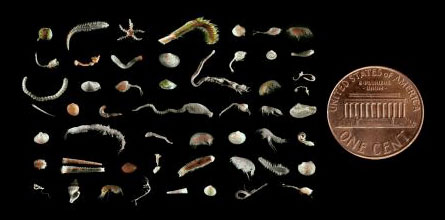In the funny math of undersea biodiversity, more food means less variety among species that inhabit the muddy floors of submarine canyons.

Burrowing creatures smaller than a penny thrive in sediments at the bottoms of underwater canyons, feeding on edible bits of debris that waft down from above. The richest windfalls land near the bases of canyon walls, so generally more species would be expected to congregate in those spots.
Yet samples pulled from as deep as 2,500 meters down in the Monterey Canyon off the California coast found only half the number of species near walls as in the center of the canyon, says Craig McClain of the National Evolutionary Synthesis Center in Durham, N.C.
Videos taken from a remotely operated vehicle suggest an answer to paradox, McClain says. The zone of fine dining near the walls attracted bigger animals, such as crabs and urchins, which aren’t dainty eaters. They furrowed and gouged the sediment as they scavenged, making the mud a less hospitable place for smaller creatures.
McClain and James Barry of the Monterey Bay Aquarium Research Institute in Moss Landing, Calif., publish their results in the April Ecology.






